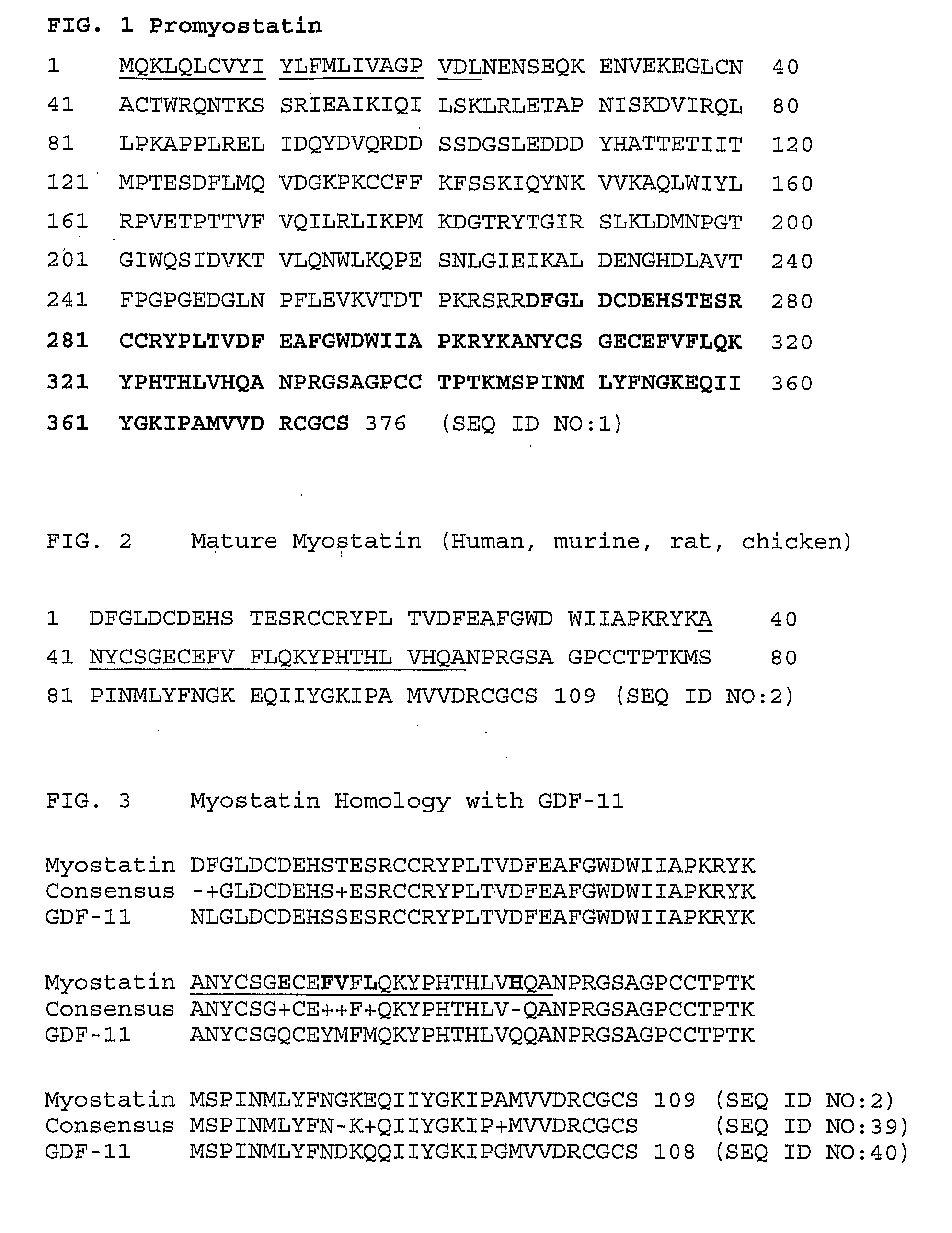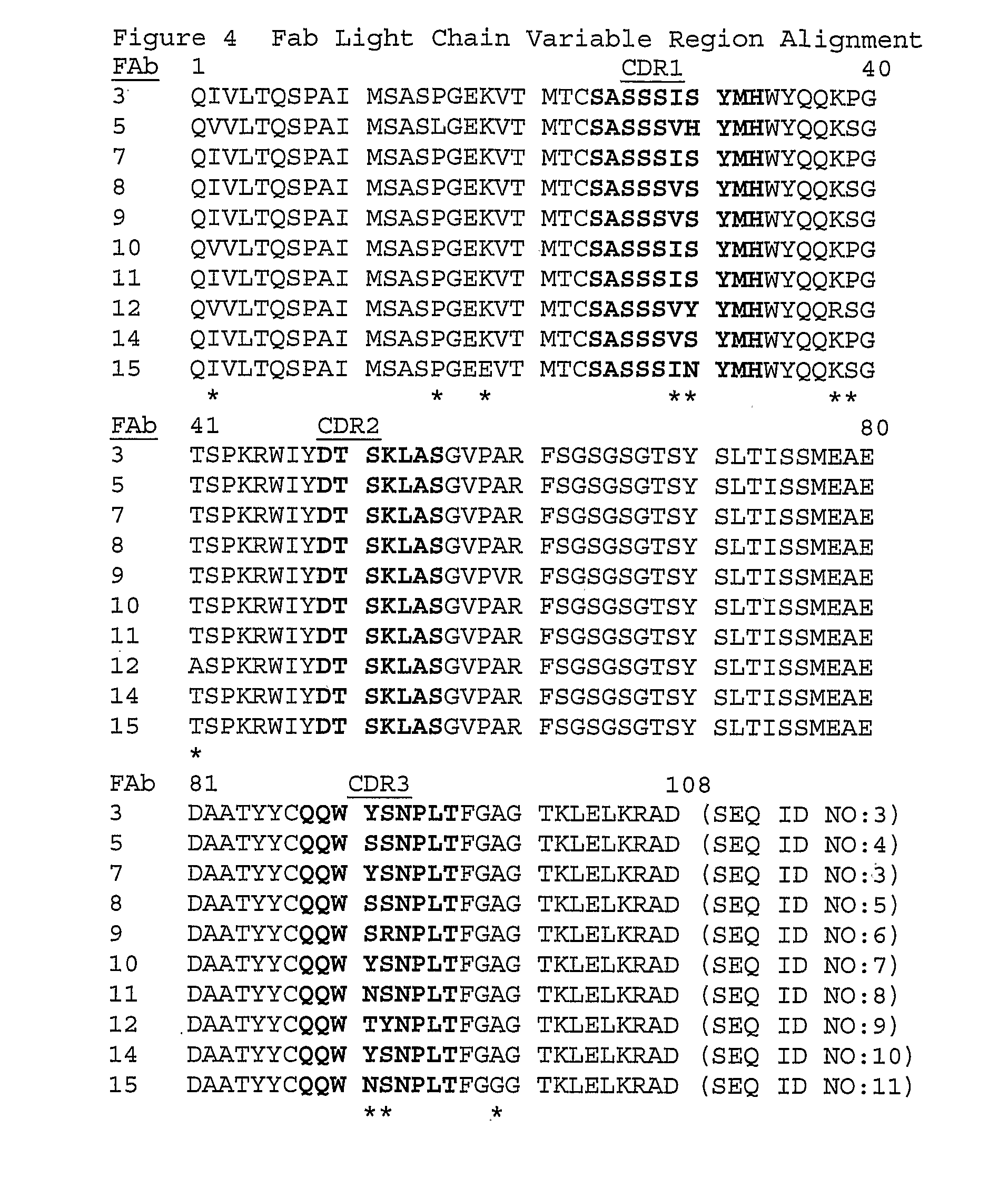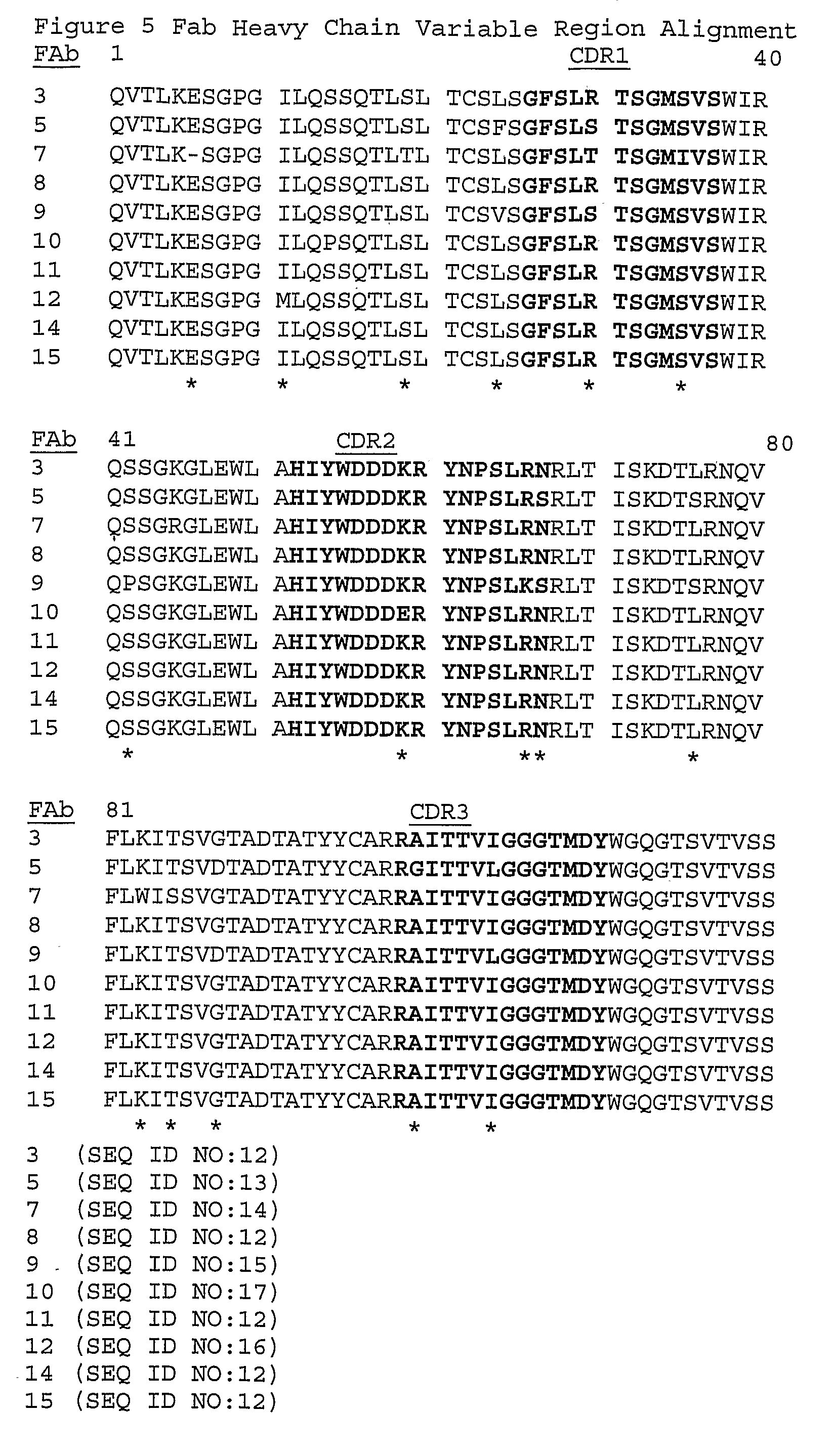Anti-myostatin antibodies
a monoclonal antibody and myostatin technology, applied in the field of medicine, can solve the problems of limited effective treatment of disorders or conditions, and achieve the effects of increasing muscle strength, inhibiting myostatin activity, and increasing muscle mass
- Summary
- Abstract
- Description
- Claims
- Application Information
AI Technical Summary
Benefits of technology
Problems solved by technology
Method used
Image
Examples
example 1
Anti-Myostatin Fab Synthesis
[0132] Clones of anti-myostatin Fabs are isolated from a Fab library created by immunizing C57B1 / 6 wild-type mice using Omniclonal™ antibody technology (Biosite®, San Diego, Calif.). The mice are immunized with an immunogenic polypeptide with the amino acid sequence: ANYCSGESEFVFLQKYPHTHLVHQA (SEQ ID NO: 43). This sequence is identical to the sequence spanning amino acids 40-64 of the mature form of human myostatin (SEQ ID NO: 2) with the exception that the Cys residue at position 47 in wild-type human mature myostatin (underlined in SEQ ID NO: 43 above) is changed to a Ser residue to prevent carrier or hapten linkage to the peptide at this residue. To improve the immunogenicity of this peptide the carrier protein, keyhole limpet hemocyanin, and a helper T-cell peptide are conjugated to the immunogenic peptide according to standard methods. The HCVR and LCVR CDR and framework amino acid sequences disclosed herein (Tables 1 and 2; FIGS. 4 and 5) are iden...
example 2
ELISA Assays
[0133] A. Anti-Myostatin Fabs Preferentially Bind Mature Myostatin Mouse anti-myostatin Fabs of the present invention (See, FIGS. 4 and 5) are tested in an ELISA assay, in which binding of the Fab to mature myostatin (dimeric form) coated at various concentrations on a 96-well plate is measured. Binding of the Fabs to GDF-11is also tested.
[0134] Each well of two 96-well plates is coated with 70 μl recombinant mouse myostatin (R&D systems, Cat. #788-G8 / CF, carrier-free, 1 μg / ml in carbonate buffer, pH 9.6) or 70 μl recombinant human GDF-11 (Peprotech, Inc., Cat. # 120-11, carrier-free, 1 μg / ml in carbonate buffer, pH 9.6). The plates are incubated at 4° C. overnight. The wells are aspirated and washed twice with washing buffer (20 mM Tris (hydroxymethyl) aminomethane, pH 7.4, 0.15 M NaCl, 0.1% Tween-20). The plates are blocked with 200 μl blocking buffer per well (5% Carnation Instant milk in the above washing buffer) for 5 hours.
[0135] Fabs to be tested are diluted i...
example 3
Myostatin Neutralization Assay
[0151] Ectodermal explants are removed from stage 8-9 blastula Xenopus embryos by standard procedures and cultured in 0.5×MBS (1×MBS: 88 nm NaCl, 1 mM KCl, 0.7 mM CaCl2, 1 mM MgSO4, 5 mM HEPES, 2.5 mM NaHCO3, 1:1000 v / v gentamycin, 0.1% bovine serum albumin) with the addition of growth factor (GDF8 or GDF11) plus or indicated, for 18 hours at 18° C., by which time control embryos reach the early neurula stage (stage 15-16). Explants are photographed and the length of each explant is measured using an image analysis algorithm designed for animal cap quantitation. Explants not treated with either growth factor or Fab (controls), round into balls of epidermis. Myostatin and GDF-11 induce mesoderm in these ectodermal explants which causes the explants to elongate and form dumbbell-like structures. Antibodies or Fabs, when tested for neutralizing activity, are added to the culture medium containing myostatin for the entire length of the culture period and ...
PUM
| Property | Measurement | Unit |
|---|---|---|
| pharmaceutical composition | aaaaa | aaaaa |
| muscle mass | aaaaa | aaaaa |
| bone density | aaaaa | aaaaa |
Abstract
Description
Claims
Application Information
 Login to View More
Login to View More - R&D
- Intellectual Property
- Life Sciences
- Materials
- Tech Scout
- Unparalleled Data Quality
- Higher Quality Content
- 60% Fewer Hallucinations
Browse by: Latest US Patents, China's latest patents, Technical Efficacy Thesaurus, Application Domain, Technology Topic, Popular Technical Reports.
© 2025 PatSnap. All rights reserved.Legal|Privacy policy|Modern Slavery Act Transparency Statement|Sitemap|About US| Contact US: help@patsnap.com



